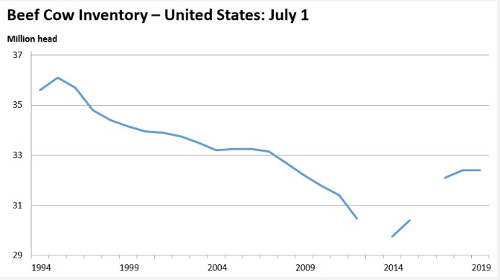By Doug Jardine
Southern rust is now active on corn from Kansas to Indiana and southward (Figure 1). This disease used to arrive in Kansas around the first of August, but since 2015, it has been arriving much earlier. The first positive field in 2019 was discovered on July 11, but based on the age of the pustules, it has been here since sometime in mid-June. This, combined with very late-planted corn in many areas of the state, increases the threat that this disease will cause significant yield loss problems in 2019. The severity is dependent on the weather. The 10-day forecast indicates that weather will remain favorable for disease development. Southern rust likes 90-degree days, warm nights, and high humidity.

Figure 1. Southern corn rust (Puccinia polyspora) in Kansas and surrounding states for 2019.
Symptoms of southern rust include pustules that are usually circular to oval, with a diameter of 0.2 to 2.0 millimeters. They typically are densely scattered on the upper leaf surface (Figures 2 and 3). When severity levels are high, pustules are occasionally seen on the underside of the leaf near the midrib; however, they are normally confined to the top side of the leaf.
Sporulation can be so heavy that the leaf surface becomes covered with a layer of “spore dust” that transfers easily to clothing as a person walks through an infected field. Light-colored clothing will quickly take on an orange-brown color (Figure 4). Southern rust can sometimes be confused with common rust.
Figure 2. Southern rust on corn. Photo courtesy of Doug Jardine, K-State Research and Extension.
Figure 3. Close-up of southern rust on corn. Photo courtesy of Tom Allen, Mississippi State University.
Figure 4. Clothing can become covered with spores while walking through heavily infested fields. Photo courtesy of Doug Jardine. K-State Research and Extension.
Treatment recommendations
Fields that have already been sprayed for gray leaf spot should also be protected from southern rust for three to four weeks after application, depending on the product used. Fields that have not received a fungicide application at tasseling should be regularly monitored for the build-up of southern rust. Fungicide applications as late as hard dough have been reported to provide economic returns in some instances.